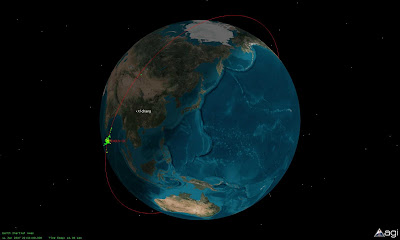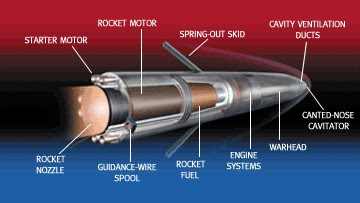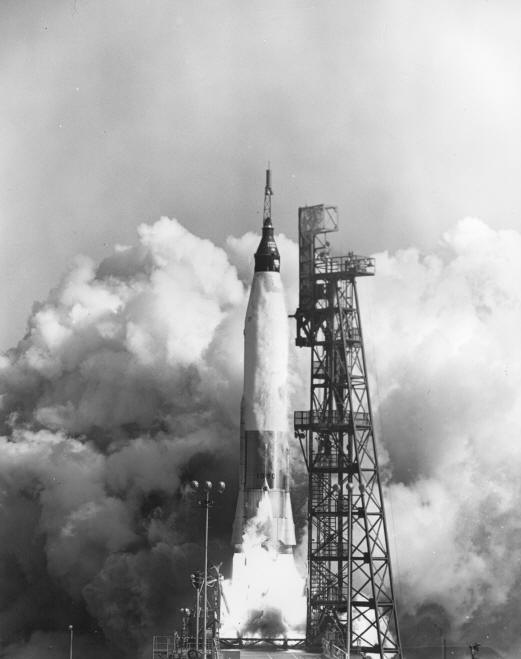Tuesday’s Roll-up of Missile/Nuclear News
Reverberations continue this week over the Chinese ASAT test and allegations of Iranian and North Korean cooperative development of nukes and long range missiles; meanwhile Iran continues to rattle the cage with announcement of another Shahab-3 test and a “new†sub-surface ship killer missile; India announces its intent to establish a dedicated aerospace defense command (don’t call it an Indian NORAD though since they aren’t partnering w/China or Pakistan…); Russia continues to push back hard against deploying ground-based elements of the US’ ballistic missile defense system (BMDS). Lots of stuff to cover – we’ll hit the first two today and follow with the rest tomorrow:< ?xml:namespace prefix = o />
a. ASAT Fallout. The magnitude of the debris issue (as first pointed out in these posts here and here) continues to grow. To bring the esoteric into a framework readily understood, the Center for Space Standards and Innovation has developed a hi-res video here (quicktime variant sans music is also available on the site). What it truly illustrates is (1) the crossing danger to the ISS and other platforms, manned or not, in an equatorial orbit and (later) a sense of the size of the debris field in relation to all the other objects currently on orbit. Arms Control Wonk also has an aptly titled article re. same subject. If you want to roll up your sleeves and get into the mechanics of kinetic kill ASATs, check out this paper .
b. Iran, North Korea; missiles and nukes. A target rich environment, as the saying goes. Towards the end of last weeks’ round of wargames/missile tests, the Iranians tested  another Shahab-3 (last test was part of the Noble Prophet round in Nov ’06). A spokesman for Iran’s foreign ministry indicated this was the final test before handing the missile over to the army for operations. The Shahab has been in development since 1998 and reputedly it or a variant forms the core of a Taepo Dong-like satellite launcher announced by the Iranians last week. According to the article in this week’s Aviation Week & Space Technology (subscription may be required) the payload would be a 44-lb satellite that would be not much more than a radio transmitter – about what Sputnik was. The launcher would most likely consist of a liquid-fueled 1st (Shahab-3 or -3 derived) and 2nd stage (Scud B) and an indigenously developed solid fuel third stage, likely using a Chinese design, possibly with strap-on solid fuel boosters for the first stage. Launch would likely be on a southerly heading from central Iran (site of most of the long-range testing) out over the Indian Ocean. On the ballistic missile front, one of the implications of a successful satellite launch would be further development to loft heavier payloads (and the implications that has for development/deployment of nuclear warheads) and increased complexities for Israel’s Arrow ABM because of the increased speed and steeper angle of re-entry of the warhead. This in turn, would drive Israel to look at either improving its Arrow system or acquiring a US system like THAAD which is oriented to intercepting higher-speed targets in the terminal phase. (ed: Of course the real irony here lies in the criminalization of private ownership of satellite dishes by the great unwashed public whilst the powers-that-be announce their intention to orbit a satellite…)
another Shahab-3 (last test was part of the Noble Prophet round in Nov ’06). A spokesman for Iran’s foreign ministry indicated this was the final test before handing the missile over to the army for operations. The Shahab has been in development since 1998 and reputedly it or a variant forms the core of a Taepo Dong-like satellite launcher announced by the Iranians last week. According to the article in this week’s Aviation Week & Space Technology (subscription may be required) the payload would be a 44-lb satellite that would be not much more than a radio transmitter – about what Sputnik was. The launcher would most likely consist of a liquid-fueled 1st (Shahab-3 or -3 derived) and 2nd stage (Scud B) and an indigenously developed solid fuel third stage, likely using a Chinese design, possibly with strap-on solid fuel boosters for the first stage. Launch would likely be on a southerly heading from central Iran (site of most of the long-range testing) out over the Indian Ocean. On the ballistic missile front, one of the implications of a successful satellite launch would be further development to loft heavier payloads (and the implications that has for development/deployment of nuclear warheads) and increased complexities for Israel’s Arrow ABM because of the increased speed and steeper angle of re-entry of the warhead. This in turn, would drive Israel to look at either improving its Arrow system or acquiring a US system like THAAD which is oriented to intercepting higher-speed targets in the terminal phase. (ed: Of course the real irony here lies in the criminalization of private ownership of satellite dishes by the great unwashed public whilst the powers-that-be announce their intention to orbit a satellite…)
Over on the nuke front, speculation continues over just what form or line of development an Iranian nuke program might be taking. Essentially, there are two types of devices that can serve as either a weapon in their own right, or as a trigger for a boosted device or thermonuclear device – implosion or gun. The gun design essentially smashes two masses together to cause a critical mass and nuclear detonation. This was used in the “Little Man†bomb dropped on Hiroshima. While simple(r) in design than an implosion device, it still is nonetheless a complex beast, has a smaller yield and drives other design issues that make it less than favorable for the linear acceleration g’s experienced in missile launches. The implosion device, where you have a physics package or “pit†made of a sphere of plutonium or highly enriched uranium, is more amenable to tighter packaging though getting the conventional explosion just right for implosion can be a trick. Also the material used, HeU or Pu will drive the size of the pit and complexity of calculations for explosion. This is why even a failed test (like the North Koreans had in Oct 07) will still provide useful data. See Paul Kerry’s blog for more on this idea. More about nuke weapons design at the Nuclear Weapons archive – scroll down the page and look under “Reference†for comparisons of the two devices mentioned above. Where the nuclear cooperation would come into play would be any lessons learned the North Koreans would pass along to the Iranians (for the right price) from their October test as alleged in an article in the Telegraph . Whether the meetings that the article states began in November of ’05 really took place is a point of dispute with denials by several high-ranking officials of the story’s validity. Secretary of State Rice has gone on the record as saying the report wasn’t based on anything she has seen. Given the cooperation seen in the development of the Iranian missile program, supported by North Korea (and China, and Pakistan and other proliferators…) one is hard pressed to be so dismissive about similar undertakings in the nuclear world, a condition that is aggravated by Iran’s lack of transparency in their nuclear program.
One other, and lesser heralded, event from last week’s round of tests was the demonstration of a surface ship firing a rocket-propelled torpedo at another distant surface target. While boasting (again) of indigenous design, it most likely is an export version of the Russian VA-111 Shkvall (“Squall”) and mirrors an ealier demonstration last spring.




One Comment
Comments are closed.